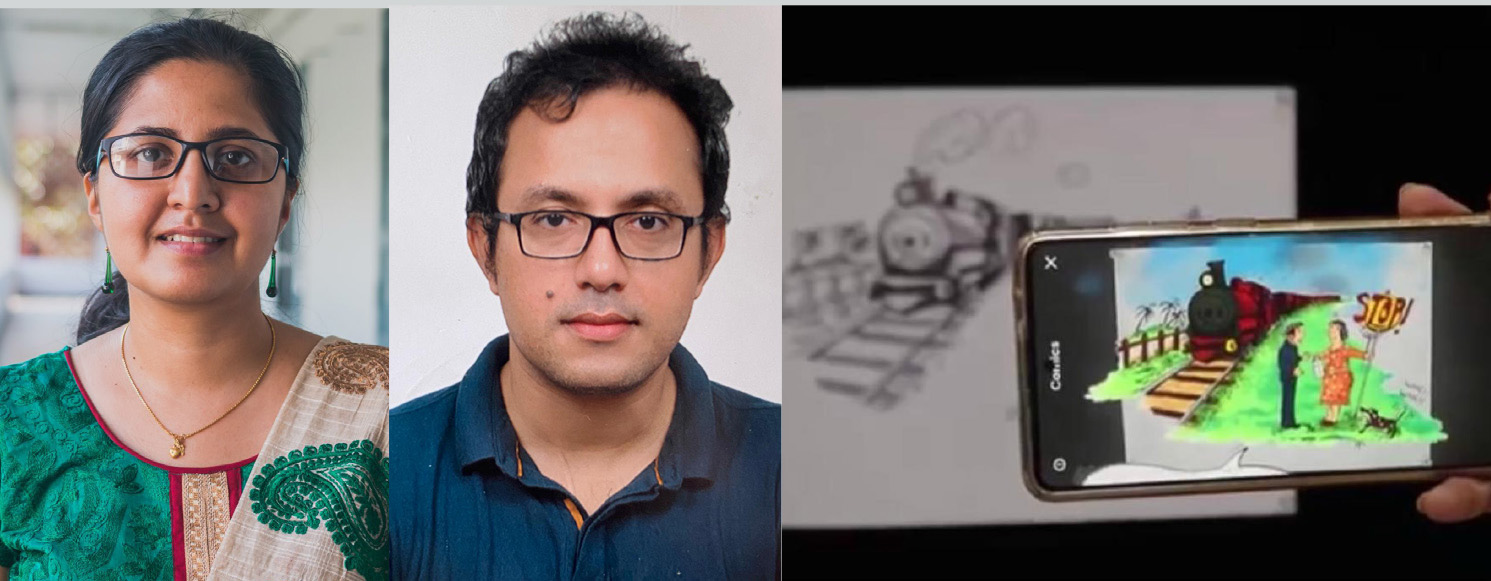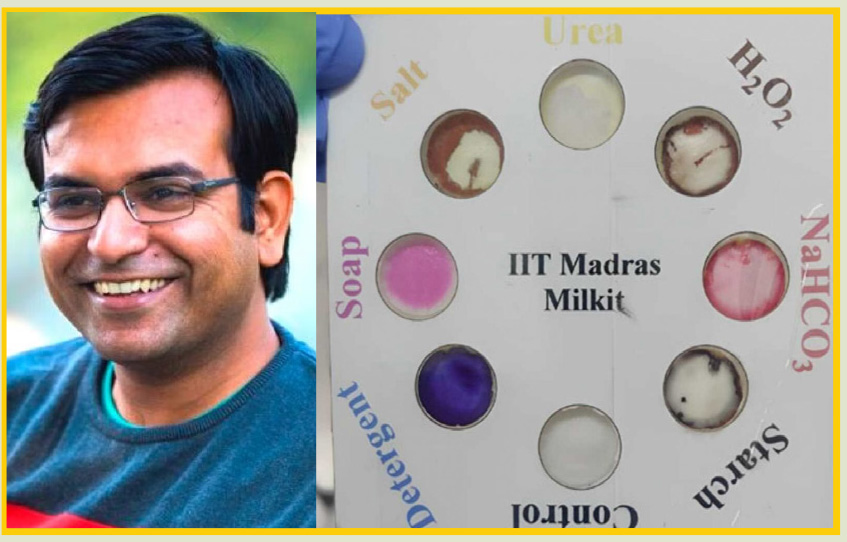Experiential Education
When realms of technology and humanities meet, the results are ground breaking. Dr Merin Simi Raj and Dr Avishek Parui from the Department of Humanities and Social Sciences have forged barriers and used Augmented Reality (AR) to experience data in different ways. “We worked on a project for tracing Anglo Indian’s history in India and collected rich data. We wanted to showcase the data for both scholarly purpose and at the same time present it in an interesting manner to wider audience. That was when AR came in,” said Merin. The team developed an app, Memorybytes with three segments. The first has a world map which shows the travel of the community. The next is an interactive timeline of events and both these segments are arranged in an easy to access manner for both students and research scholars. Third is a set of photographs which act as an marker and when the app is focussed on them, the AR projection pops up as both visual and sound signals creating an unique experience for the viewer. This was put up as an exhibition in Dakshin Chitra, near Chennai where school children enjoyed interacting with the same. “It was a phygital exhibition and we got a response that students spent lot of time with it,” said Merin.

As pure as milk…
Milk is a symbol of purity and prosperity in our county and adulteration in that has been a concern for long. “About three years back, my brother, a community doctor, asked me if there was a way to identify adulteration in milk before consumption and that set out this project,” said Dr Pallab Sinha Mahapatra, Department of Mechanical Engineering. Pallab and his team decided that the cost of the device would be the primary factor and that it had to be made easily accessible to the consumer. After interaction with experts and going through common adulterants from FSSAI website, the team set out to task. “Our goal was to make a device that easily identifies adulterants by changing colours. This is called colourmetric,” explained Pallab. The team developed a simple strip made out of 3D paper to detect common adulterants like urea, detergents, soap, starch, hydrogen peroxide, sodium-hydrogen-carbonate and salt, among others. With just a drop of milk, within 30 seconds the strip changes colour to highlight the adulterant.

The milk adulteration kit is at present designed for use by single customers and is sure to make a mark when it hits the shelves.
